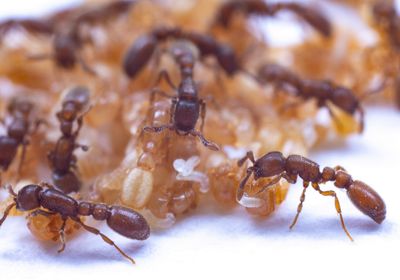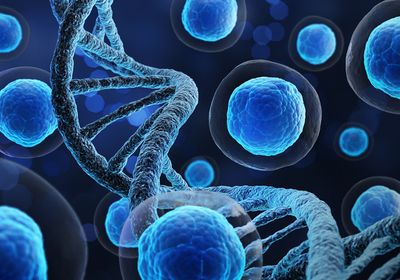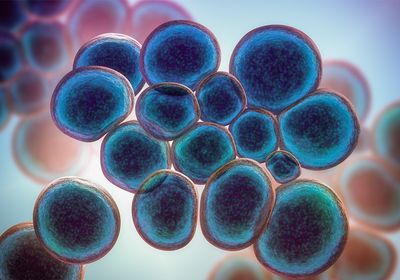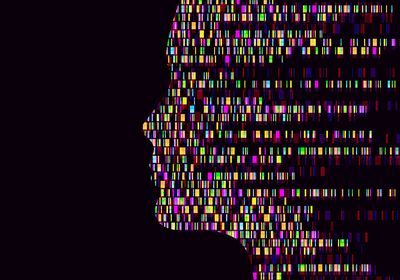ABOVE: A nest of clonal raider ants (Ooceraea biroi) in which workers have placed larvae on the pupae, where they feed on pupal secretions. DANIEL KRONAUER
How complex ant societies emerged among ants’ solitary ancestors remains one of the big mysteries of social insect biology. Ants are eusocial, meaning that they have overlapping generations, collective brood care, and reproductive division of labor within the nest. Now, researchers at the Rockefeller University have discovered a way that metabolic interdependence among members of an ant colony may have evolved.;
Ant pupae—which are equivalent to the chrysalis stage of the butterfly—produce a milklike substance derived from molting fluid that is eaten by both adult ants and larvae. Typically, when insects molt, they secrete a fluid that’s simply resorbed by the animal when the molt is complete. But in ants, this nutrition-rich substance serves as a kind of “metabolic currency” within the colony and may have played a role in the ants’ evolutionary transition from a group of loosely cooperating individuals into a truly integrated superorganism, according to research that was published in Nature today (November 30).
“It is a really neat study, because it is identifying a new type of social transfer that no one had even really noticed before,” says Adria LeBoeuf, who studies mouth-to-mouth fluid exchange behavior (trophallaxis) in ants at the University of Fribourg in Switzerland, and who didn’t work on the new study.
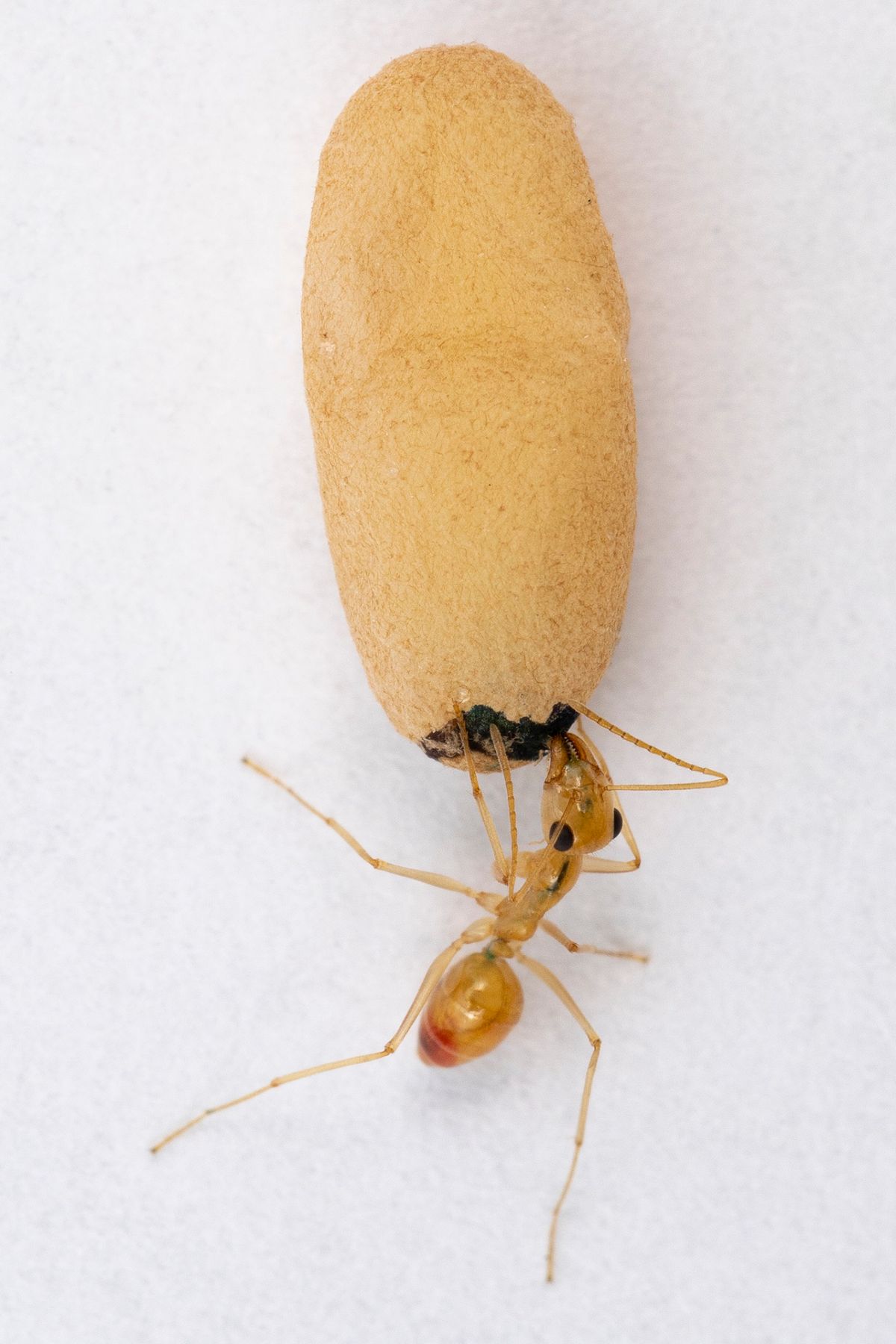
In ant colonies, the queens reproduce but the workers do not, and for years it had been a mystery why some individuals would forgo the opportunity to reproduce to support a queen instead. More than a century ago, the pioneering myrmecologist William Morton Wheeler suggested that nutrition-sharing could be a key factor in the evolution of superorganisms, but the idea did not gain much traction at the time, according to Kazuki Tsuji, who studies the evolutionary ecology of social insects at the University of the Ryukyus in Japan and was not involved in the study.
Later, in the 1960s and 70s, British biologist W.D. Hamilton’s kin selection theory, which posits that some organisms may prioritize helping their genetic relatives reproduce over reproducing themselves, provided a genetic framework to explain how this kind of altruism could evolve. But the old hypothesis about the role of nutrition-sharing remained overlooked until relatively recently, says Tsuji. Now, “our consensus is that nutrition is a kind of blood or metabolic currency in the superorganism,” he explains. Still, most nutritional exchanges were thought to happen between adults, and nobody had previously observed these transfers among pupae, larvae, and adults.
In the new study, coauthor Orli Snir, a postdoctoral fellow in ant biologist Daniel Kronauer’s lab at the Rockefeller University, was interested in the interactions between different life stages of clonal raider ants (Oocerarea biroi) and started by observing what happened when she separated each life stage from the others. She observed that when the pupae are isolated from the colony, a fluid builds up and forms a droplet at the tip of their abdomen within a few hours.
When adults are reintroduced to the pupae, they immediately drink the fluid, removing it from the pupae. In the colony, the adults drink the fluid as it is secreted, so it never accumulates. The researchers also found that pupae become susceptible to fungal infections if the fluid accumulates for too long, explains Kronauer, so they depend on the adults to remove it.
The young ant larvae need this fluid, too. In fact, inside the colonies, the workers take young ant larvae and put them onto the pupae so they too can drink the molting fluid. “Nobody really knew what young ant larvae feed on,” Kronauer says. It turns out they are completely reliant on the pupal secretion; without it, “they have completely stunted growth and the survival goes down a lot. So it’s really this milk-like fluid for the larvae,” he says.
The researchers conducted a proteomic analysis of the fluid, which not only confirmed that it was molting fluid replete with enzymes that help break down the ants’ discarded cuticle, but that it also contained hormones and neuroactive substances which Kronauer suspects could impact caste development of the larvae and the behavior of adults.
To explore how general the finding was, Kronauer’s team sampled five different ant species in Central Park in New York City and found that pupae of all five species secrete this molting fluid. “So it seems this ancient and specific evolutionary innovation really creates these dependencies in an ant colony, and it really integrates the ant colony as a superorganism,” he says.
According to LeBoeuf, ants sharing their “leftover” molting fluid could have been the beginning of more elaborate social transfers, such as forms of trophallaxis in which food is passed around among long chains of individuals. “Other social transfers that we see in ants may have coopted things that were already in the pupal molting fluid,” she says. “If there’s already this currency that’s moving in the colony, even if it’s not very well networked, then you can use that currency and you can build other ways to contribute to that economy,” she says.
Tsuji adds that pupae have long been considered “useless” because this life stage is generally immobile and quiescent. Maybe that’s why the interactions between pupae and the other life stages hadn’t been noticed before, he suggests. In spite of its simplicity, “this is the most surprising, simply amazing finding.”

